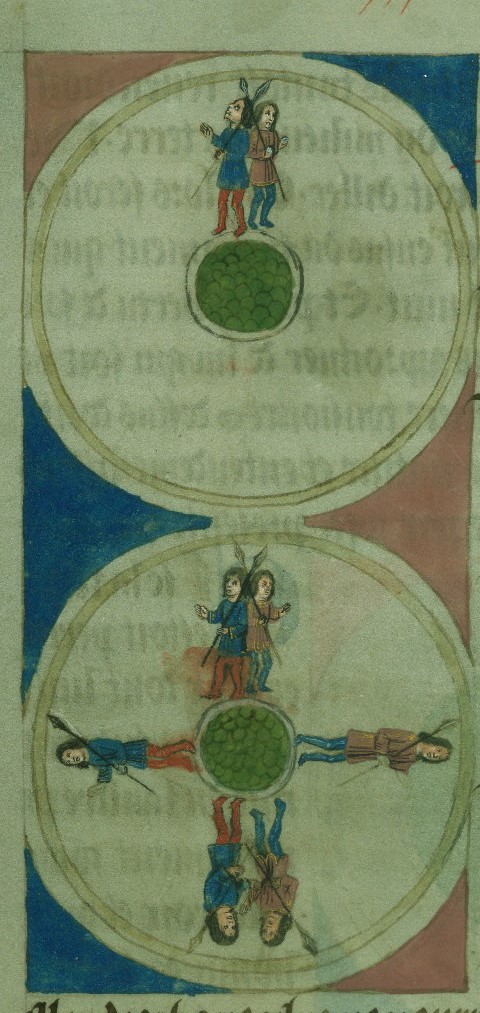Verrassingen
The World is your Apple

In the popular imagination the Middle Ages remains the time of obscurantism and ignorance. One of the most vivid images associated with the period is the idea of a flat world. Numerous surviving medieval encyclopedias, however, describe the spherical Earth. When dealing with what we now know of as the Solar system they also describe it as composed of concentric circles, but with the Earth, not the Sun at the centre. (This is known as the Ptolemaic system, after the Greek astronomer Ptolemy.) Whilst much medieval encyclopedic writing was in Latin and aimed at further study for an educated audience, some was very much educational in nature, and trying to explain complicated concepts in an accessible way to a wider interested public. The twelfth-century encyclopedia Imago mundi, written in very accessible Latin, and its various thirteenth-century translations into the local languages, is one such example.
One of these translations, the French l’Image du monde by Gossouin or Gautier of Metz, adds pictures and colourful explanations to the text to make it easier to understand. To explain how the Earth is round, Gautier uses the metaphor of an apple: “A man”, he says, “can go around it, as a fly goes around the apple. If two men separate and one goes to the east and the other to the west, they will meet at the antipodes” [my translation]. In most manuscripts of the Image du monde, this text is accompanied by an illustration, showing two rather large individuals travelling around a disproportionally small circular earth to meet each other on its other side.
As there is a tendency to misread medieval maps (which like ours are projections of a three-dimensional object onto a two-dimensional space) and imagine they represent a flat world, one could, of course, imagine that the medieval illuminators thought the Earth was very small and walked upon by giants. However, what this picture really is, is a helpful schoolbook-like illustration demonstrating the sphericity of the earth, which is round like an apple!
Natalia Petrovskaia
Further reading
Woodward, David. “Reality, Symbolism, Time, and Space in Medieval World Maps.” Annals of the Association of American Geographers 75, 1985, 510-21.
Image
Gossouin (or Gautier) of Metz, l’Image du monde. United States of America, Baltimore (MD), Walters Art Museum, Walters Ms. W.199 (Bruges, 1489), fol. 42r.
Source: https://www.thedigitalwalters.org/Data/WaltersManuscripts/html/W199/description.html Licensed for use under Creative Commons Attribution-ShareAlike 3.0 Unported Access Rights, http://creativecommons.org/licenses/by-sa/3.0/legalcode

